How to care for just hatched chicks and what to expect as they grow and develop.

I hatch quite few chicks every year and have got my system down quite well. This year I have hatched quail, ducks and Guinea fowl in addition to chickens.
Table of Contents
Baby chicks are fragile and vulnerable, especially in the early days and rely on their parents or caretakers for warmth, protection, and food.
My brooder setup:
I use a chinchilla cage with a solid plastic base and a sturdy wire cage on top. I have two sources of heat and light and use sand as the bedding material. Your brooder should be set up and running before the chicks arrive.
Below: This is how I setup my brooder.
How to care for just hatched chicks:
Creating a suitable environment is crucial for the well-being of your chicks.
- Place the brooder in a quiet, draft-free area. Chicks are easily stressed, so it's important to provide them with a calm environment.
- Keep them warm. Newly hatched chicks need to be kept warm at all times. The ideal temperature for a brooder is 95-100 degrees Fahrenheit for the first week, then you can gradually lower the temperature by 5 degrees each week until it reaches 75 degrees Fahrenheit. You can use a heat lamp or electric hen to keep the brooder warm.
- Provide them with fresh water and food. Chicks need access to fresh, clean water at all times. You can use a chick waterer with a nipple to prevent them from drowning. You should also provide them with a chick starter feed.
- Keep them clean. Chicks are messy creatures, so it's important to keep their brooder clean. You should clean the brooder and change the bedding daily.
- Handle them carefully. Newly hatched chicks are fragile, so you should handle them carefully. Avoid picking them up by their feet or wings. Only handle them when necessary, and be sure to support their bodies.
- Add a chick lamp to the brooder. This will help keep the chicks warm and comfortable.
- Watch for signs of illness. Chicks are susceptible to a variety of diseases, so it's important to watch them for signs of illness. Some common signs of illness include:
- Lethargy
- Loss of appetite
- Diarrhoea
- Coughing
- Bloody poop
- Sneezing
If you notice any of these signs, it's important to take the chick to a veterinarian immediately.
Food, water and treats for baby chicks:
During the first 6 to 8 weeks, provide your chicks with a balanced diet of chick starter mash or crumble. My preference is for medicated crumb as it helps with coccidiosis which can kill chicks and make them unthrifty for the rest of their lives.
Below: The chicks quickly learn where the food is.
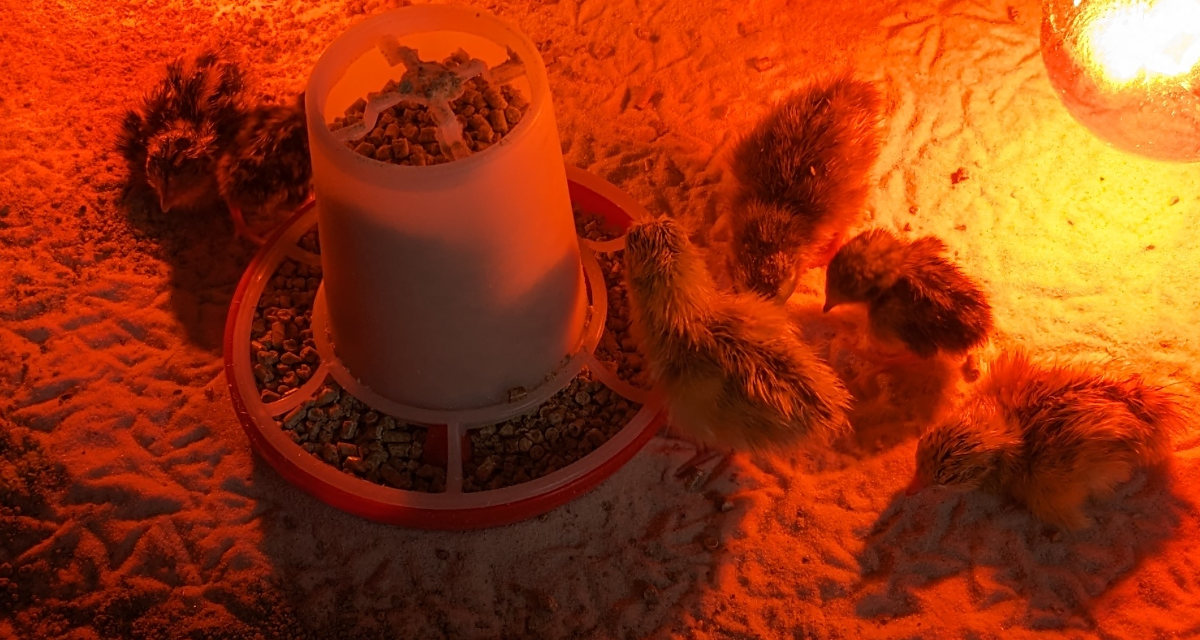
These specially formulated feeds contain essential nutrients, proteins, and vitamins necessary for healthy growth. Make sure the feed is readily available to them at all times.
Fresh and clean water is crucial for your chicks' well-being. Ensure a constant supply of water and regularly clean and refill their water containers to prevent contamination. Use shallow containers to prevent accidental drowning.
Introduce grit to your chicks' diet when they are around two weeks old. Grit aids in digestion by grinding food in the gizzard. You might want consider providing supplements like probiotics or vitamins to enhance their overall health.
Teaching your chicks:
There are a few things you need to teach baby chicks after they hatch, luckily they seem to be quick learners and most pick it up on the first go.
- Where to find food and water. Chicks need to know where to find food and water to survive. You can help them learn by placing their food and water dishes in a consistent location in their brooder. You can also dip their beaks in the water to show them where it is.
- How to eat and drink. Chicks may not know how to eat and drink right away, so you may need to help them learn. You can do this by gently dipping their beaks in the food and water. You can also show them how to peck at the food and drink from the water dish.
- Not to eat the bedding: Chicks need to be discouraged from eating wood shavings or sand bedding, this is done by covering in paper for a day or two.
- How to dust bathe. Dust bathing is an important behaviour for chickens, and it helps to keep their feathers clean and free of parasites. You can help your chicks learn how to dust bathe by providing them with a shallow dish of sand or dirt in their brooder.
- How to socialise. Chicks are social creatures, and they need to learn how to interact with other chickens. You can help them learn by introducing them to other chicks at a young age. You can also spend time with your chicks and handle them gently to help them get used to being around people.
- What to fear. Chicks are prey animals, and they need to learn what to fear in order to stay safe. You can help them learn by exposing them to things that are safe, such as people and other chickens.
It is important to start teaching your chicks these things as soon as they hatch.
Below: Teaching my chicks to feed by mimicking their mothers behaviour.
The sooner they learn, the easier it will be for them to adjust to their new environment and thrive.
Here are some additional tips for teaching baby chicks:
- Be patient and gentle. Chicks are delicate creatures, so it is important to be patient and gentle when handling them.
- Be consistent. Chicks learn by repetition, so it is important to be consistent with your teaching.
- Make it fun. Learning should be fun for chicks, so try to make it a game or a puzzle.
- Be positive. Chicks learn by association, so make sure they associate learning with positive experiences.
With a little patience and effort, you can teach your baby chicks everything they need to know to thrive.
Do chicks need toys and enrichment?
Just like any other animal, chicks need mental stimulation and physical activity to stay healthy and happy.
Here are some ideas for toys and enrichment for baby chicks:
- Food toys: These toys are a great way to encourage your chicks to forage and problem-solve. You can hang greens in the cage, make a peck block or drill holes in an old log and hide bugs inside them.
- A dust bath: Chicks will dust bathe instinctively from a very early age.
- Hideaways and tunnels: Chicks love to explore and hide, so providing them with hideouts and tunnels is a great way to keep them entertained. You can make your own or purchase them. I use a mop head hung up in a corner of the brooder with about 5 inches of space underneath.
- Mirrors: Chicks are curious creatures, and they love to look at themselves in mirrors. A mirror can provide them with hours of entertainment.
- Natural objects: Chicks are also fascinated by natural objects, such as leaves, twigs, and pine cones. Scattering these objects around their brooder or coop will give them something to explore and peck at.
- Swings: Swings provide chicks with a way to exercise and have fun.
- Perches: Perching is an instinctive behaviour linked to the health and well being of chickens.
When choosing toys and enrichment for baby chicks, it is important to choose toys that are safe and appropriate for their age and size. You should also avoid anything that could pose an injury or choking hazard.
Choose toys that are made from safe materials and inspect the toys regularly for any damage.
How to keep the mess and smell from chicks under control:
Regularly clean the brooder, bedding, and water containers to eliminate waste, bacteria, and potential health risks. Dirty and damp environments can lead to infections and respiratory issues.
Use a trough feeder and raise the waterers up a little to stop mess getting in.
Consider switching the brooder bedding to sand, it is cheaper, easier and safer than shavings and both holds the heat and handles moisture better.
Below: Sand is much easier to use as a bedding in the brooder. You still have to cover it for a day or two so the chicks learn to eat crumb instead of the bedding.
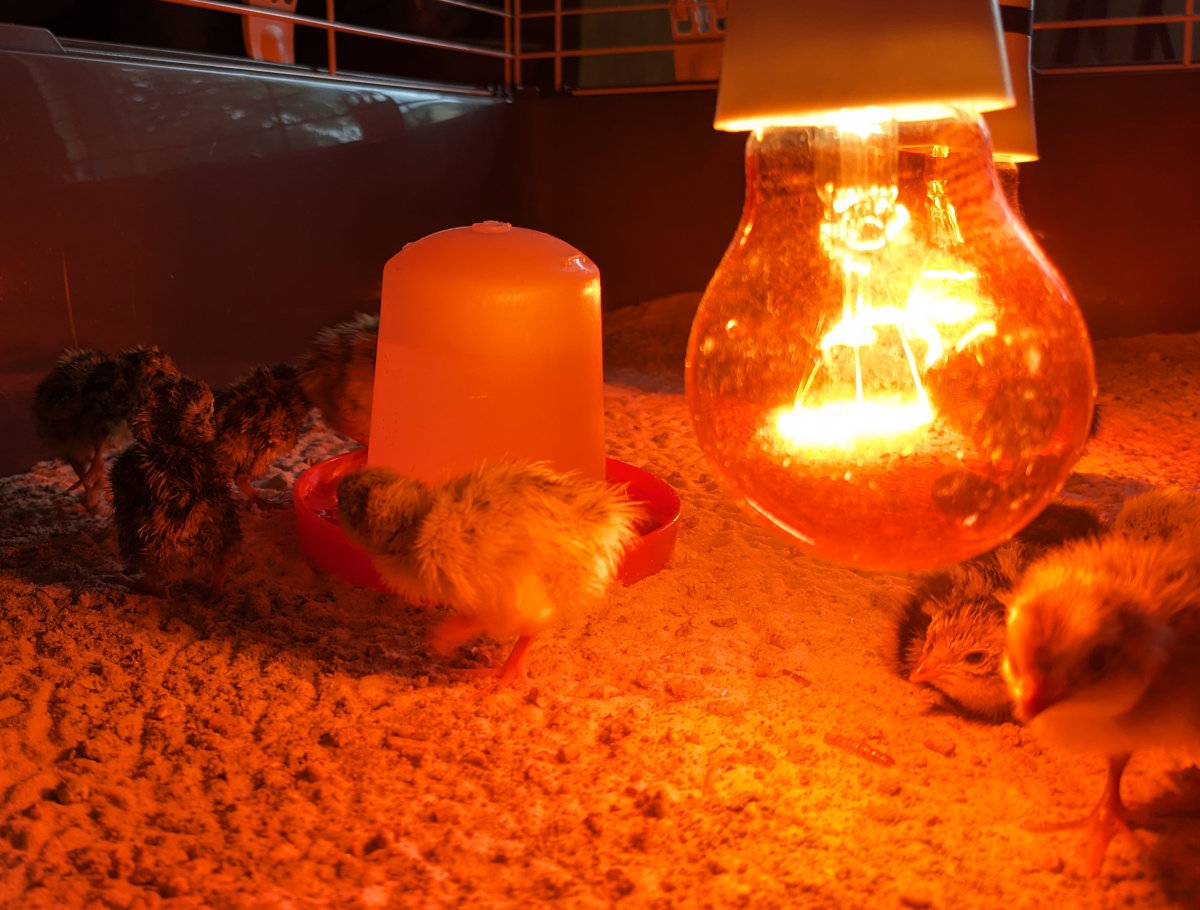
Proper ventilation helps remove excess moisture and ammonia from the rearing area and help with smells.
Good airflow prevents respiratory problems and promotes healthier chicks. However, ensure there are no drafts that could cause chilling.
Ensure your chicks have enough space to move around comfortably. Overcrowding can lead to stress, health issues, and even aggression.
And lastly, when your chicks are old enough, provide supervised outdoor time in a safe and enclosed area. If the days are warm and sunny this can be as early as a week old.
This allows them to explore, peck, scratch, and engage in natural behaviours. Fresh air, sunlight, and contact with the soil contribute to their overall health.
How the chicks develop over time:
The weekly development of chicks after hatching from week 1 to 8:
| Week | Expected Development | Feed (grams per day) |
|---|---|---|
1 week. 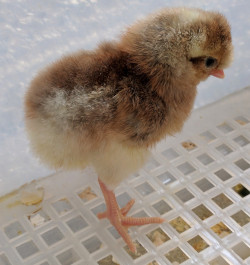 | The chick is fully hatched, and it starts to dry off. The chick will start to eat and drink. Baby chicks are born with their eyes open and are noisy and love to chirp and peep. Baby chicks can't regulate their own body temperature, so they need to stay warm. | 10-15 |
2 weeks.  | The chick's feathers will begin to show through the fluff and it will start to become more active. The chick will start to explore its surroundings, and it will start to learn how to roost and dust bathe given the opportunity. | 15-20 |
3 weeks. 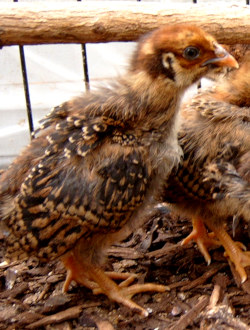
| The chick's feathers will start to grow in, and it will start to develop its adult plumage. The chick will start to lay down fat stores, and it will start to become more independent. | 20-25 |
4 weeks. 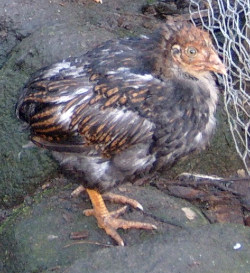 | The chick will start to develop its social skills and l learn how to forage for food, and it will start to become less reliant on its parents. Baby chicks are playful and love to run, jump, and flap their wings. | 25-30 |
5 weeks  | The chick will continue to grow rapidly, and it will start to develop its adult characteristics. The chick will start to moult its baby feathers. | 30-35 |
6 weeks
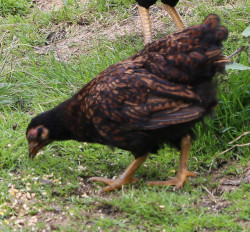 | The chick will start to become more independent, and it will start to explore its surroundings spending more time away. Baby chicks are social animals and like to be around other chicks. | 35-40 |
7 weeks 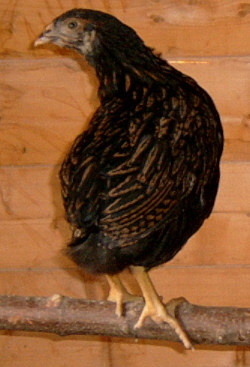 | The chick is fully feathered and may start flying. It is ready to move out of the brooder. The chick will start to explore its surroundings. | 40-45 |
8 weeks 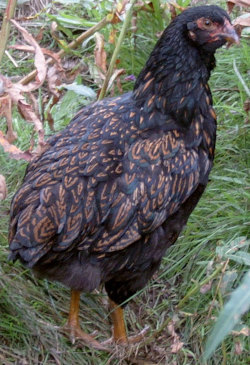 | The birds are well covered in adult feathers and are beginning to show red around the face. The chick will start to find its own place in the social hierarchy of the flock. | 45-50 |
